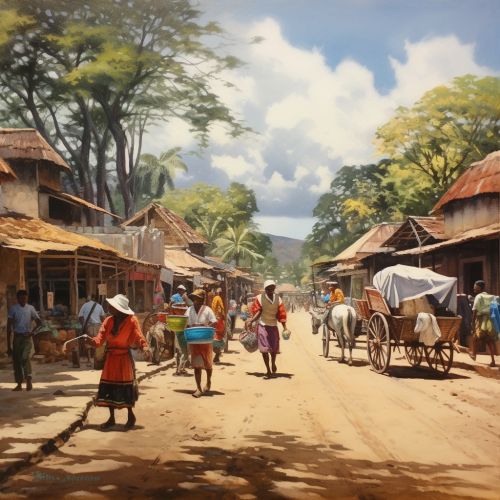Economy of the Dominican Republic
Overview
The Economy of the Dominican Republic is the eighth largest in Latin America, and is largely dependent on services, manufacturing, and agriculture. The country's service sector has recently overtaken agriculture as the leading employer of Dominicans due to growth in telecommunications and tourism. Although the service sector has provided economic advancement, agriculture remains vitally important, providing 60% of the country's exports and employing a large portion of the workforce.


Economic History
The Dominican Republic has long been viewed primarily as an exporter of sugar, coffee, and tobacco, but in recent years the service sector has overtaken agriculture as the economy's largest employer, due to growth in telecommunications and tourism. However, the mining sector has the highest average wage and the manufacturing sector has grown dramatically, fueled by the construction of free trade zones.
Economic Sectors
Agriculture
Agriculture, including fishing and forestry, is a mainstay of the economy, and is the largest employer. Products include sugar, coffee, tobacco, cotton, and various fruits. The country is self-sufficient in most foodstuffs and exports some of its agricultural production.
Industry
The industrial sector contributes significantly to the Dominican Republic's GDP, led by mining (ferronickel, gold, and silver), the processing of petroleum products, and the manufacture of chemicals, pharmaceuticals, and plastics. Other important sectors include the production of textiles and clothing, and leather goods.


Services
The service sector has recently overtaken agriculture as the leading employer of Dominicans, accounting for approximately 60% of employment. The sector is mainly composed of telecommunications, trade, hotel and restaurant activities, finance and real estate, and various business services.
Economic Policies and Initiatives
The Dominican government has implemented a range of policies to stimulate economic growth, including fiscal and monetary measures, as well as initiatives to improve the business environment. These efforts have led to steady GDP growth, but challenges remain in reducing income inequality and improving public services.
Foreign Trade and Investment
The Dominican Republic has a favorable trade balance, with exports exceeding imports. The United States is the country's largest trading partner, followed by China and Haiti. Foreign direct investment (FDI) is concentrated in the telecommunications, tourism, and manufacturing sectors.
Economic Challenges
Despite its economic progress, the Dominican Republic faces several challenges, including income inequality, inadequate public services, and vulnerability to natural disasters. The government is working to address these issues through various initiatives, but progress has been slow.
